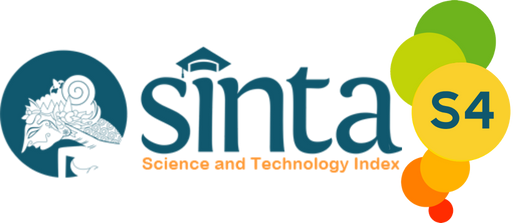KEEFEKTIFAN MODUL ELEKTRONIK BERBASIS KONSERVASI UNTUK MENINGKATKAN KREATIFITAS PEMBELAJARAN MATA KULIAH PANGKAS DISAIN
Abstract
Keywords
Full Text:
PDFReferences
Ashby, L. (2011). Extension's Progress in the Paperless Revolution: Balancing Digital and Paper. Journal of Extension. Vol 49 (1)
Ehtamo H., RP. Hämäläinen, Ville Koskinen. (2004). An e-learning Module on Negotiation Analysis. Proceedings of the 37th Hawaii International Conference on System Sciences. Helsinki University of Technology, Sweden
Galvin, B. (2011). A Blended Learning Course Teaching Information Literacy For Substance Use Prevention Work. Journal of information Literacy. Vol 5 (1).
Getuno DM., JK. Kiboss, JM. Changeiywo, LB. Ogola. (2015). Effects of an E-Learning Module on Students’ Attitudes in an Electronics Class. Journal of Education and Practice. Vol.6 (36)
McAlpine KG., DM. Wotton. (2009). Conservation and the delivery of ecosystem services. Science for Conservation 295.
Ramadoss A., Moli GP. (2011). Biodiversity Conservation through Environmental Education for Sustainable Development - A Case Study from Puducherry, India. International Electronic Journal of Environmental Education Vol. 1 (2)
Ramdania, Diena Randa. (2013). Penggunaan Media Flash Flip Book Dalam Pembelajaran Teknologi Informasi Dan Komunikasi Untuk Meningkatkan Hasil Belajar Siswa. Artikel Ilmiah Tugas Akhir, tidak dipublikasikan. Universitas Pendidikan Indonesia, Bandung
Sugiyono. (2012). Metode Penelitian Pendidikan (Pendekatan Kuantitatif, Kualitatif, R&D). Bandung: Alfabeta
Suharsimi Arikunto. (2010). Prosedur Penelitian Suatu Pendekatan Praktik. Jakarta. Rineka Cipta
Refbacks
- There are currently no refbacks.







